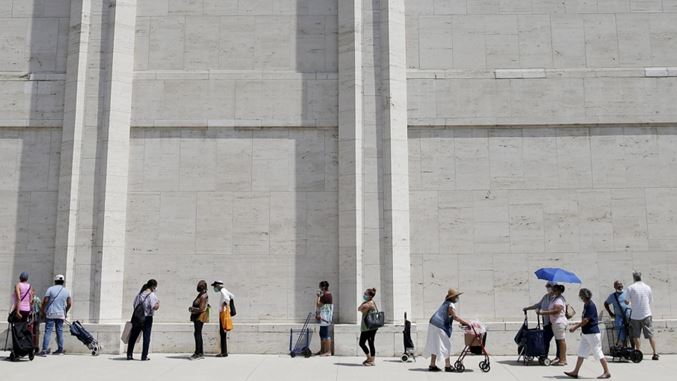
July 31 (UPI) — Britain tightened restrictions in some areas Thursday as the global number of COVID-19 cases surpassed 17 million six months after officially being declared a global health emergency.
British Health Secretary Matt Hancock announced that separate households in Greater Manchester, East Lancashire and parts of West Yorkshire may not meet each other indoors beginning at midnight after identifying an “increasing rate of transmission” in those areas.
“The spread is largely due to households meeting and not abiding to social distancing,” Hancock said.
Britain reported 846 new cases Thursday — for a total of 303,910 — 46,084 deaths as a result of the virus since the outbreak began.
Thursday marks six months since Tedros Adhanom Ghebreyesus, World Health Organization director-general, declared the novel coronavirus a Public Emergency of International Concern with 7,900 cases worldwide.
At the time, China — where the virus was first discovered in early December — had 7,766 cases with 98 infections total diagnosed in 18 other countries, including six in the United States.
Global cases reached 17,130,295 on Thursday, while the worldwide death toll hit 669,160 people, according to data gathered by John’s Hopkins University as of Thursday evening.
The 17 million milestone was passed some four days after surpassing 16 million infections and a month since hitting 10 million.
“The pandemic continues to accelerate,” Tedros said Monday. “In the past six weeks, the total number of cases has roughly doubled.”
The three countries of the United States, Brazil and India accounted for half of all infections with a combined 8.5 million cases and more than a third of all deaths.
Infections continue to climb in other nations as well with Japan and Australia recording record daily increases in new infections Thursday.
Japan recorded 1,264 new coronavirus cases Wednesday, its first time seeing more than 1,000 cases in a 24-hour period, Japan’s national broadcaster NHK reported.
Its total now sits at 34,663 with more than 1,007 dead to the virus.
Eight of Japan’s 47 prefectures reported record highs Wednesday, including Osaka, which had 221 cases, and Aichi, which saw 167 infections.
Australia also recorded a record surge of 747 new cases with all but 24 reported in Victoria.
“Today is not a good day,” Victoria Premier Daniel Andrews said in a statement announcing that from midnight Sunday everyone in the state will be required to wear a mask and those in specific regions will no longer be allowed to entertain visitors at their homes.
“The data is telling us that outside work, this is the single greatest cause of transmission in these communities,” he said. “People are visiting friends and family — and taking the virus home with them.”
The African continent is also experiencing exponential spread of the virus, according to the global humanitarian aid organization International Rescue Committee.
In the past two months, infections have increased by 500% in Africa while cases have more than doubled in the last two months alone, the organization said in a release on Thursday. The IRC called for a massive increase in international funding as there is a dearth of testing.
Compared to the WHO-recommended one test per 1,000 people a week, in some countries where the IRC operates, such as Niger, its workers are able to administer 1 test per 2,680 people.
The organization compared its situation to fighting the epidemic in the dark and the actual number of infections may be much higher than reported.
“The doubling of confirmed COVID cases in July across African countries is alarming, but we are worried that this could be the tip of the iceberg,” Stacey Mearns, senior technical advisor of Emergency Health at IRC, said in a statement.
She said that while the WHO recommends a test positivity rate of 5%, many countries are testing much higher than that with Somalia testing at 32%, the Democratic Republic of Congo at 21% and South Sudan at 18%.
“The testing shortfalls make it nearly impossible to understand the extent of the pandemic — let alone put measures in place to stop it,” she said.
In China, the original epicenter of the virus, health officials continue to report a spike in cases in its northwestern Xinjiang region.
Though substantially lower than its high of nearly 4,000 cases set in early February, mainland China on Thursday reported more than 100 new cases for its second consecutive day.
However, 96 of the new cases were reported in Xinjiang a shy drop from the 98 diagnosed in the region the day prior.
Overall, China has reported 87,363 cases and 4,658 deaths.





